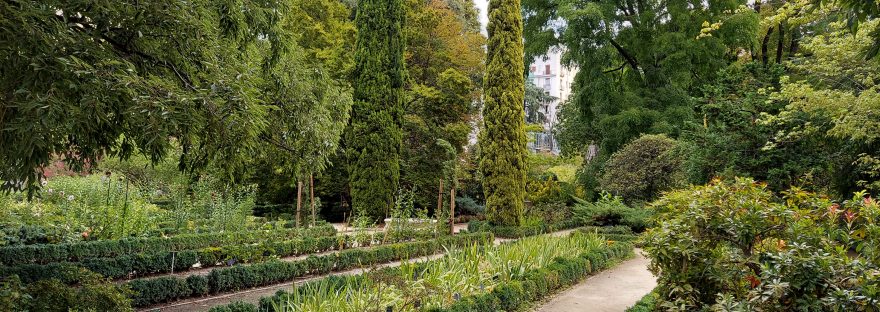Shown as a museum, where its living exhibits change throughout the year, making this great space unique in its kind in Spain, it is the Royal Botanical Garden of Madrid.
With a privileged location in front of the Prado Museum, the Royal Botanical Garden has a space of 75,000 m2, containing approximately 5,000 different species of trees and plants from all over the world.
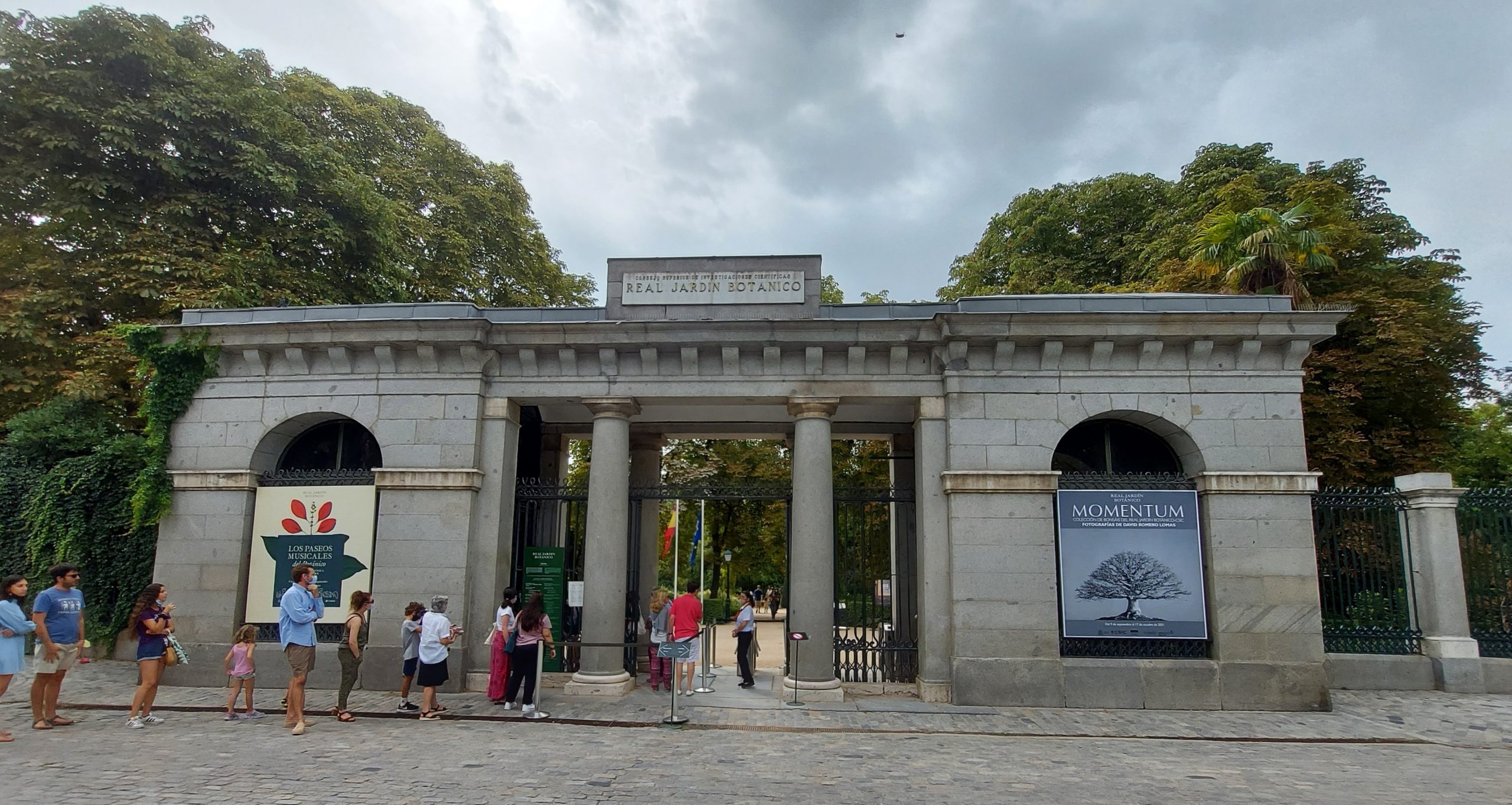
The Royal Botanical Garden was founded in 1775, mainly to exhibit plants from all over the Spanish empire and its mission has always been to promote botanical sciences. It was founded by order of King Ferdinand VI in the Soto de Migas Calientes, near the Manzanares River. By 1781, Carlos III ordered its transfer to its current location, at Paseo del Prado, next to the Museum of Natural Sciences that was being built at that time (currently Museo del Prado), in Madrid.
By 1939, the Royal Botanical Garden became part of the Superior Council of Scientific Research. In 1942 it was declared an Artistic Garden and in 1947 a National Monument. However, decades of great challenges followed, which led to its abandonment. Then came the closure in 1974 in order to restore it, returning it to its original style. The works were carried out between 1980 and 1981, with the architect Antonio Fernández Alba in charge of remodeling the pavilion, and the architect Guillermo Sánchez Gil, together with the landscape architect Leandro Silva Delgado, of returning the gardens to their original layout in terraced levels.
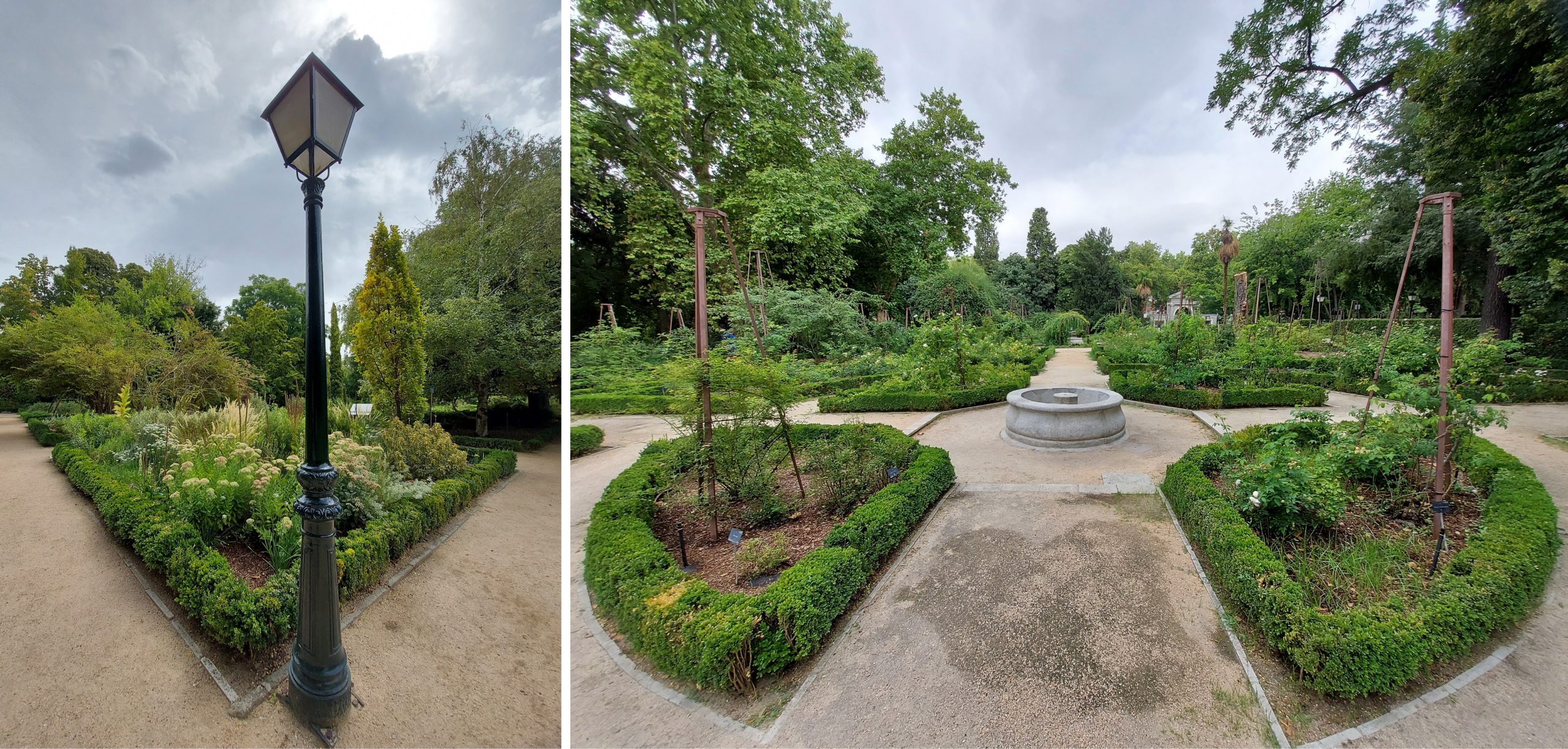
Currently, not only plants from Spain, but also from the Americas and the Pacific, as well as European plants, are on display. The living plants on display to the public are arranged on four terraces, taking advantage of the unevenness of the terrain. In addition, during the tour of its terraces you can see a series of sculptures, fountains and ponds that complete and make this space a truly beautiful and relaxing one.
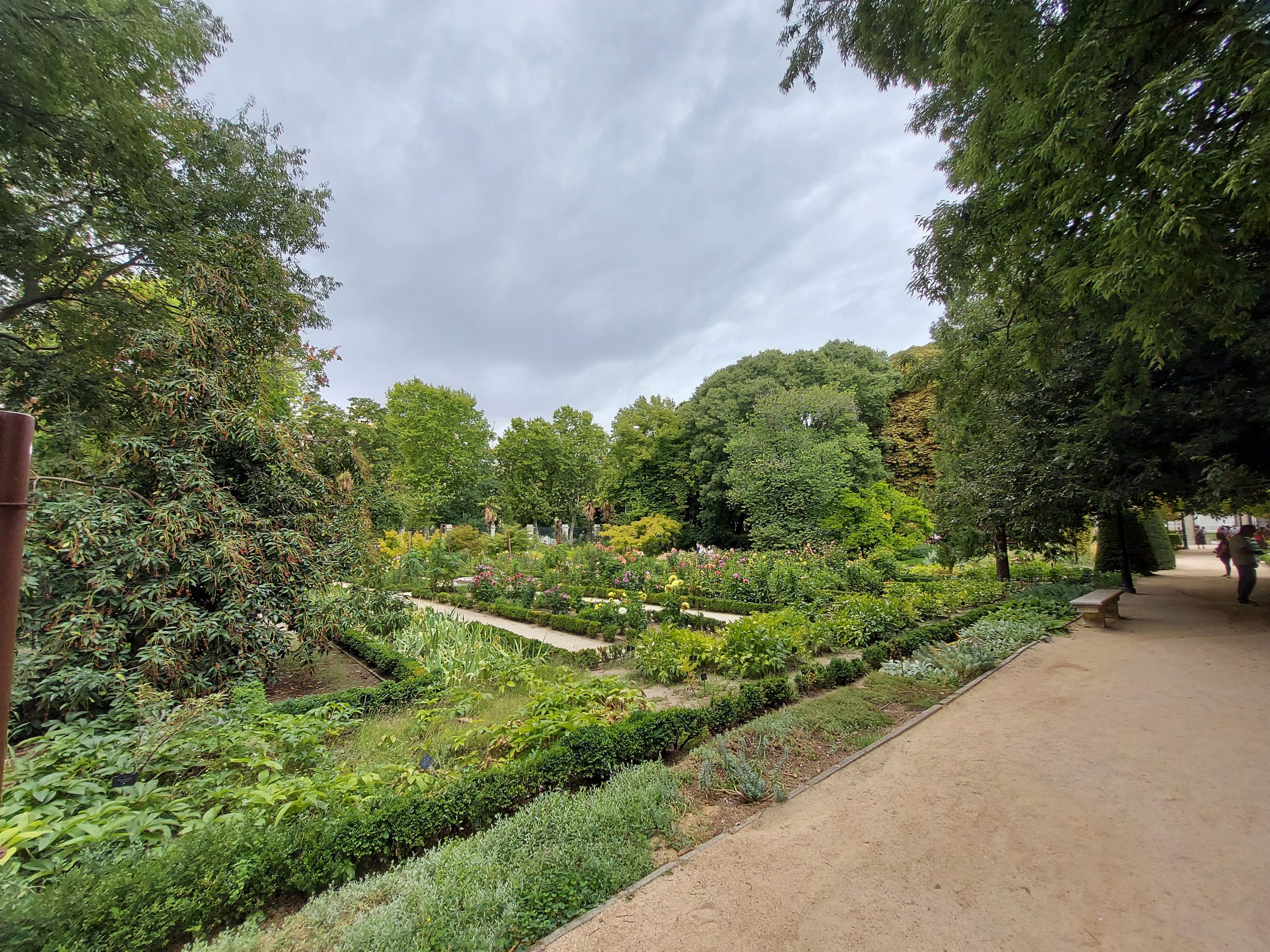
The “Terraza de los Cuadros” is located below and is the most spacious of all. It houses the collections of ornamental plants, where a great variety of beautiful Dahlias are the protagonists.
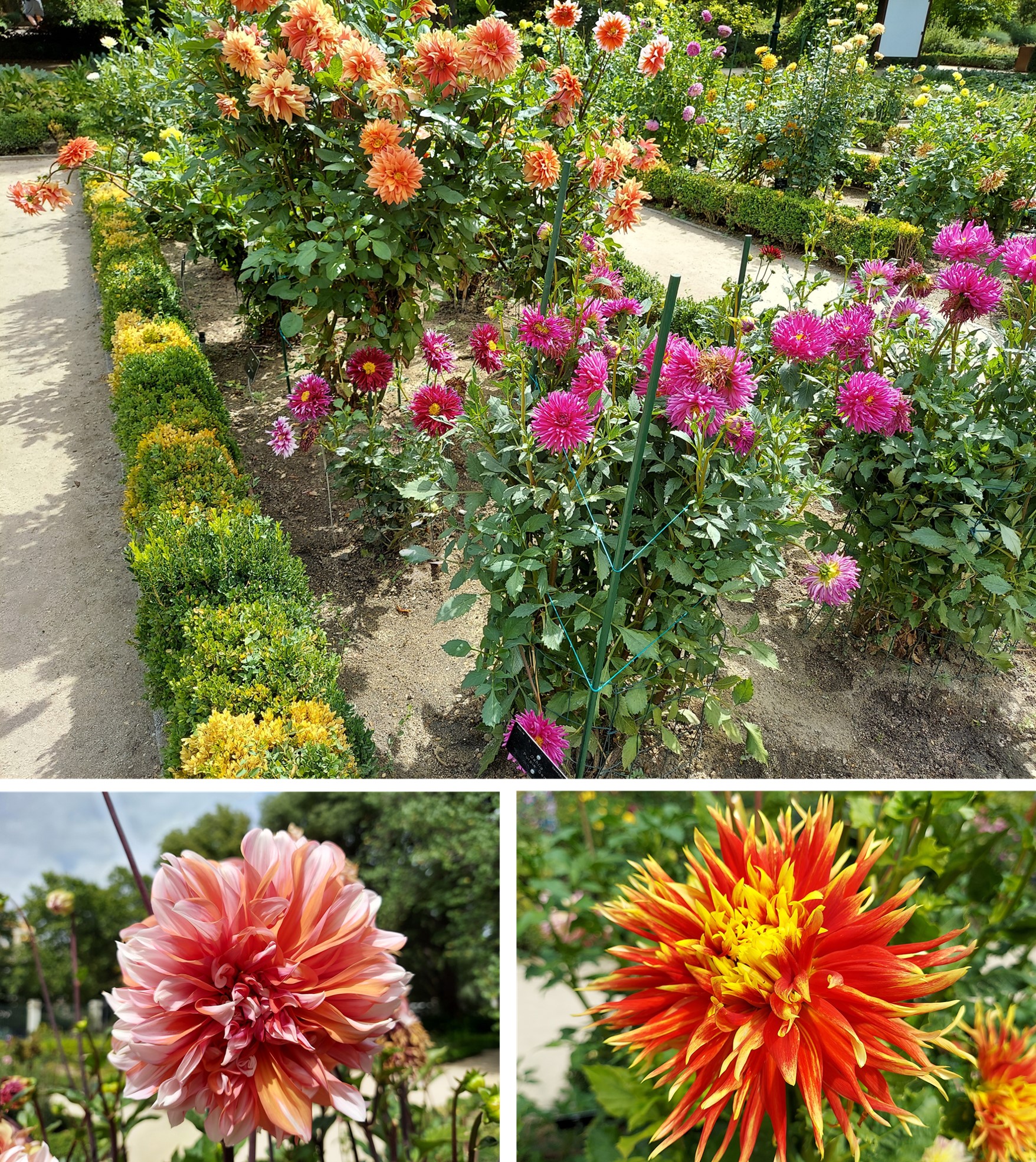 The tour of this terrace continues in the old rose bushes and aromatic plants, located within the geometric squares formed with boxwood hedges surrounding small fountains in the central axis of the squares.
The tour of this terrace continues in the old rose bushes and aromatic plants, located within the geometric squares formed with boxwood hedges surrounding small fountains in the central axis of the squares.
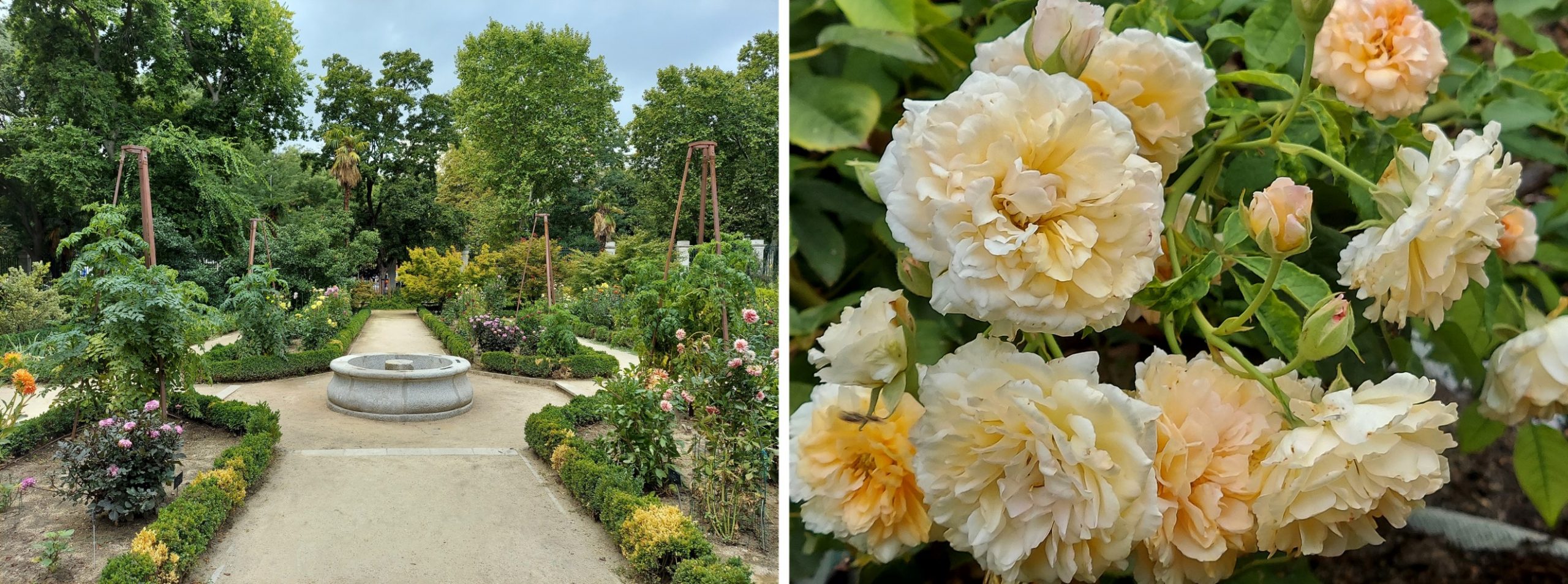 The collection of orchards and fruit trees is worth stopping and contemplating the variety cultivated. Depending on the time of the year and according to the cycle of each species, they can be observed in their different phases. As an important fact, the edible parts are not harvested in order to allow the exhibition of the whole plant. In addition, in this garden no toxic products are used for pest control. Instead, less aggressive methods are used to maintain the biodiversity of beneficial insects to the garden.
The collection of orchards and fruit trees is worth stopping and contemplating the variety cultivated. Depending on the time of the year and according to the cycle of each species, they can be observed in their different phases. As an important fact, the edible parts are not harvested in order to allow the exhibition of the whole plant. In addition, in this garden no toxic products are used for pest control. Instead, less aggressive methods are used to maintain the biodiversity of beneficial insects to the garden.
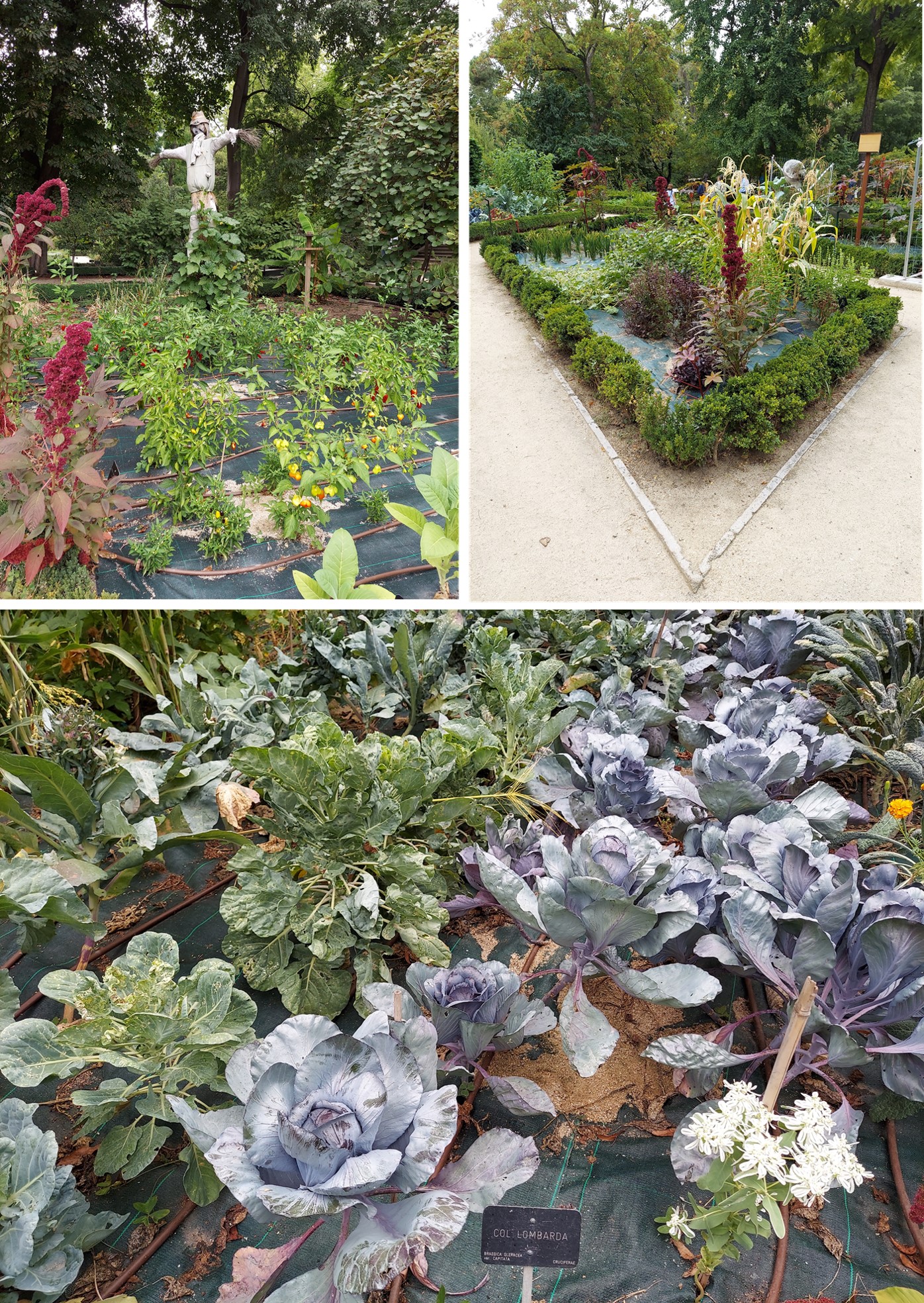 Crossing from this terrace to the second terrace, we find the Paseo Bajo de Gómez Ortega and a series of statues of illustrious botanists that impart beauty and knowledge to this walk.
Crossing from this terrace to the second terrace, we find the Paseo Bajo de Gómez Ortega and a series of statues of illustrious botanists that impart beauty and knowledge to this walk.
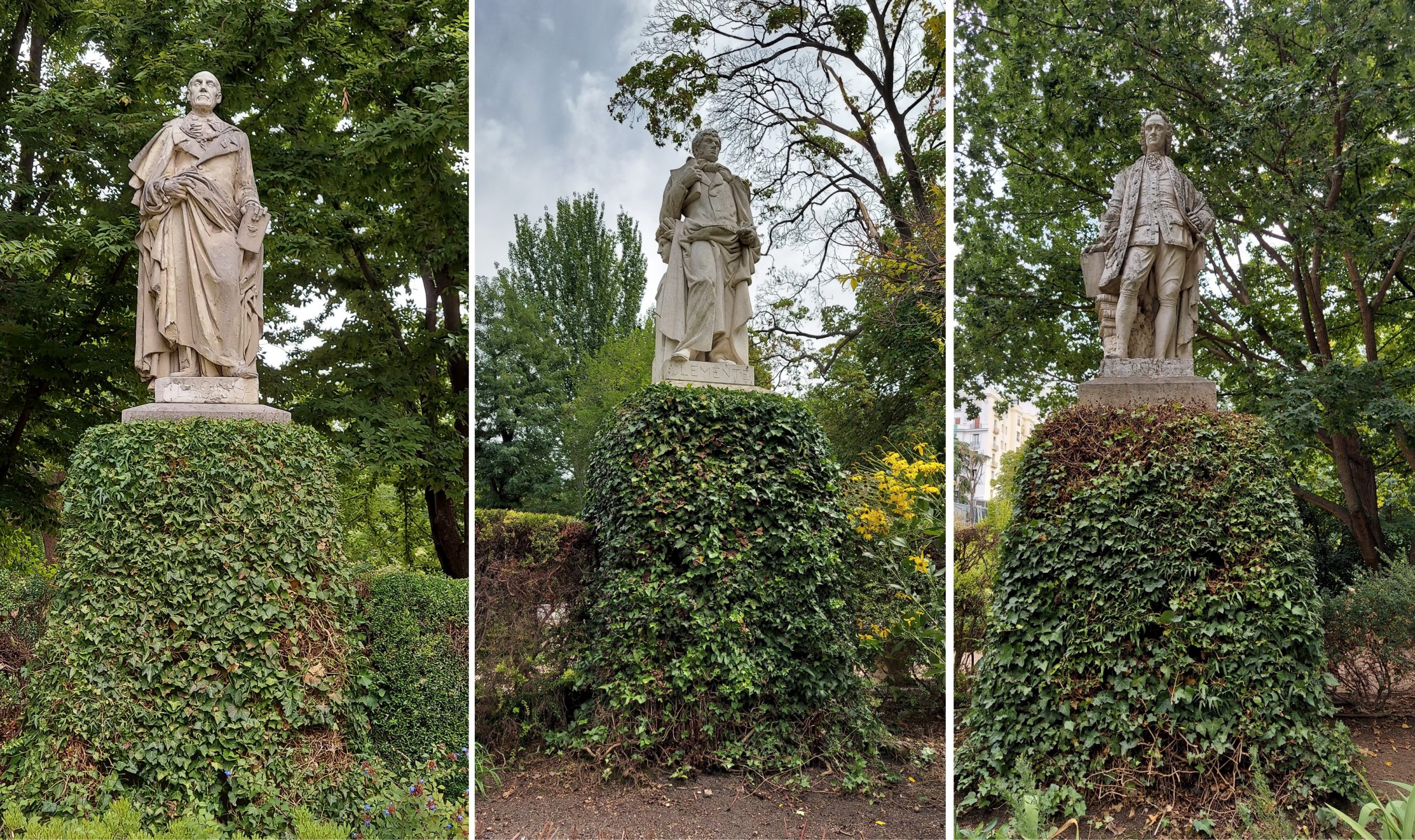
The second terrace is called the Terrace of the Botanical Schools, which is a little smaller than the previous one. This terrace shows the taxonomic collection of plants, i.e., they are grouped in order, according to their parentage. Here you can make a tour of the plant kingdom from the most primitive plants to the most evolved. In the central plane of this terrace we can find the statue of Carlos III, creator of the Royal Botanical Garden.
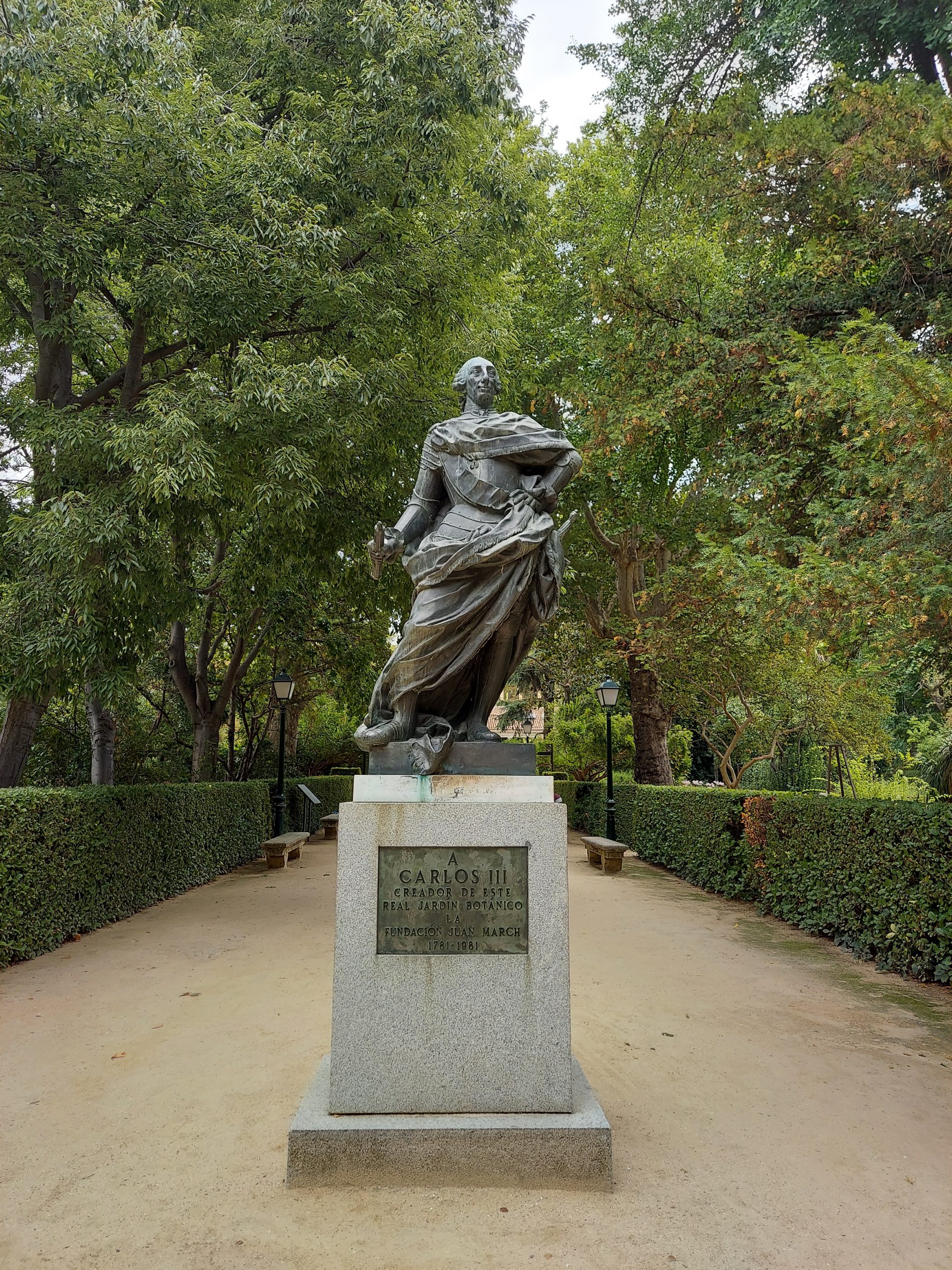
The Terraza del Plano de la Flor is the highest terrace and a little more reduced, with a romantic style. It is divided into twenty-five figures or curvilinear flowerbeds, limited by hedges of durillo, four arbors and a central arbor with a pond and a bust of Charles Linnaeus. Its great variety of trees and shrubs are planted in no apparent order. The Villanueva Pavilion, built in 1781 as a greenhouse and currently used as a gallery for temporary exhibitions, is located on the eastern edge of the Terraza del Plano de la Flor.
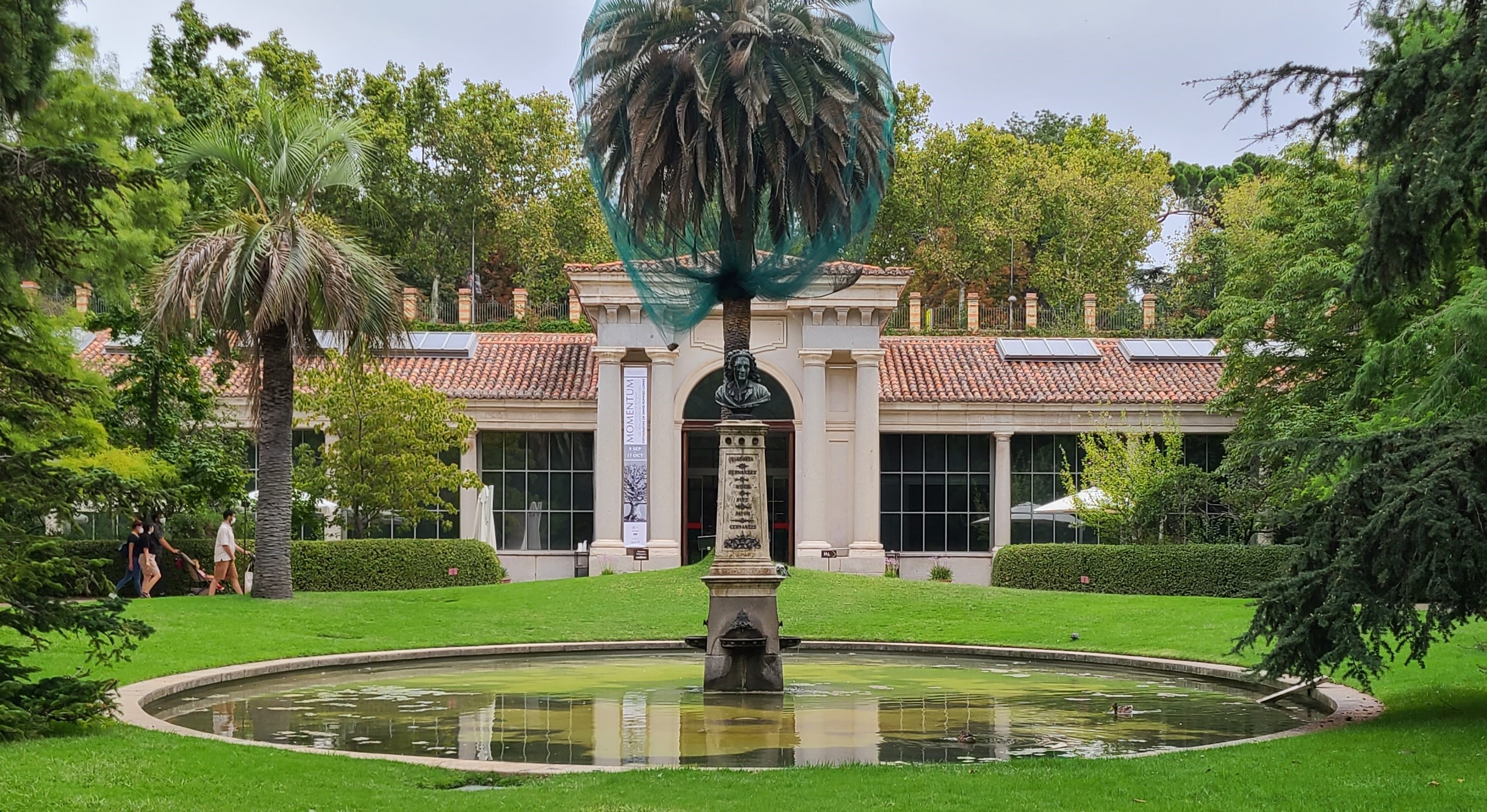
During the summer of 1786, a wrought iron pergola was installed along both sides of the Villanueva Pavilion, which is just over 300 meters long. In the 1979-1981 restoration, part of its original design was recovered.
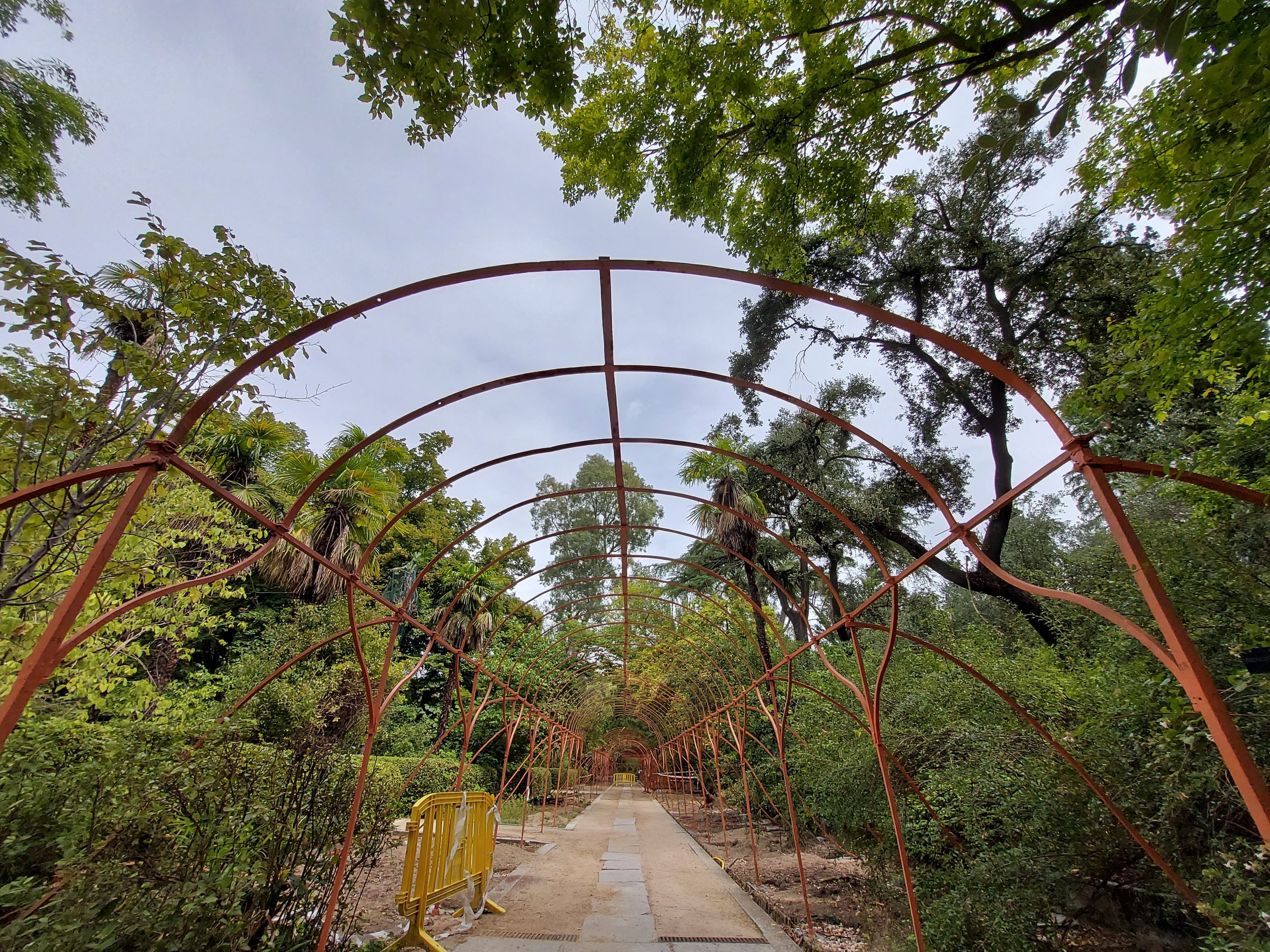 The Royal Botanical Garden shares with the visitor through its greenhouses, the opportunity to know a variety of plants from very diverse climatic zones. The Santiago Castroviejo Bolibar greenhouse is distributed in three sections: desert, subtropical and tropical. Here the appropriate conditions of light, humidity and temperature are used for the development of these plants.
The Royal Botanical Garden shares with the visitor through its greenhouses, the opportunity to know a variety of plants from very diverse climatic zones. The Santiago Castroviejo Bolibar greenhouse is distributed in three sections: desert, subtropical and tropical. Here the appropriate conditions of light, humidity and temperature are used for the development of these plants.
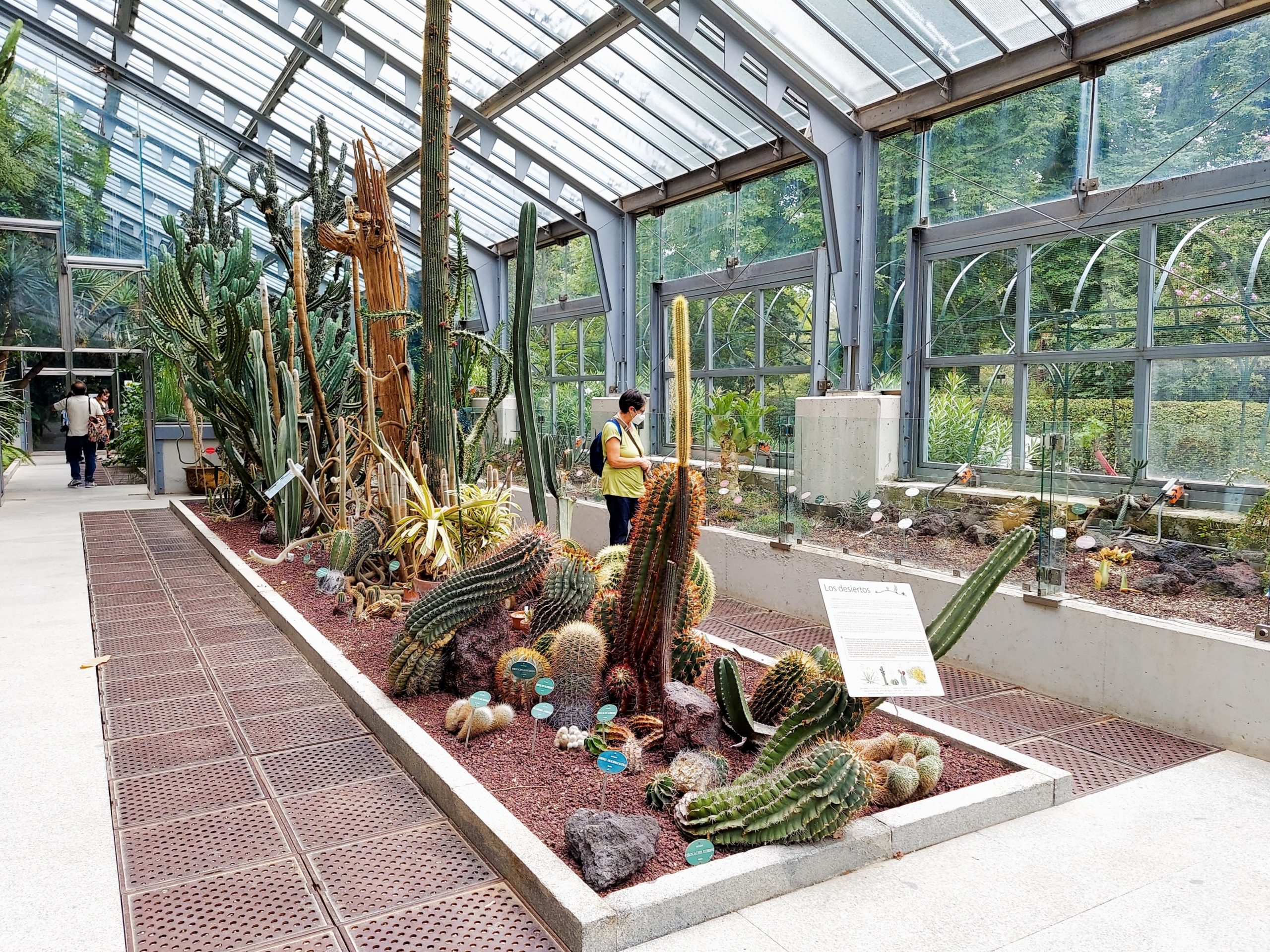
The Upper Terrace or Laurel Terrace was added as an extension to the Garden in 2005. It is much smaller in size compared to the previous terraces and is located behind the Villanueva Pavilion. The terrace is designed by the landscape designer Fernando Caruncho. It was intended to house special collections, such as the Bonsai collection donated by former Spanish President Felipe Gonzalez. It is impressive how beautiful and diverse this collection of Bonsai trees is, presented in such an appropriate setting.

It is in the Bonsai Terrace where the collection of water lilies that has given a very particular prestige to the Royal Botanical Garden is located in the oval pond. A selection of 22 specimens from different countries, fruit of the donation of Tomás Escribano, an expert in the cultivation of these beautiful and exotic plants.
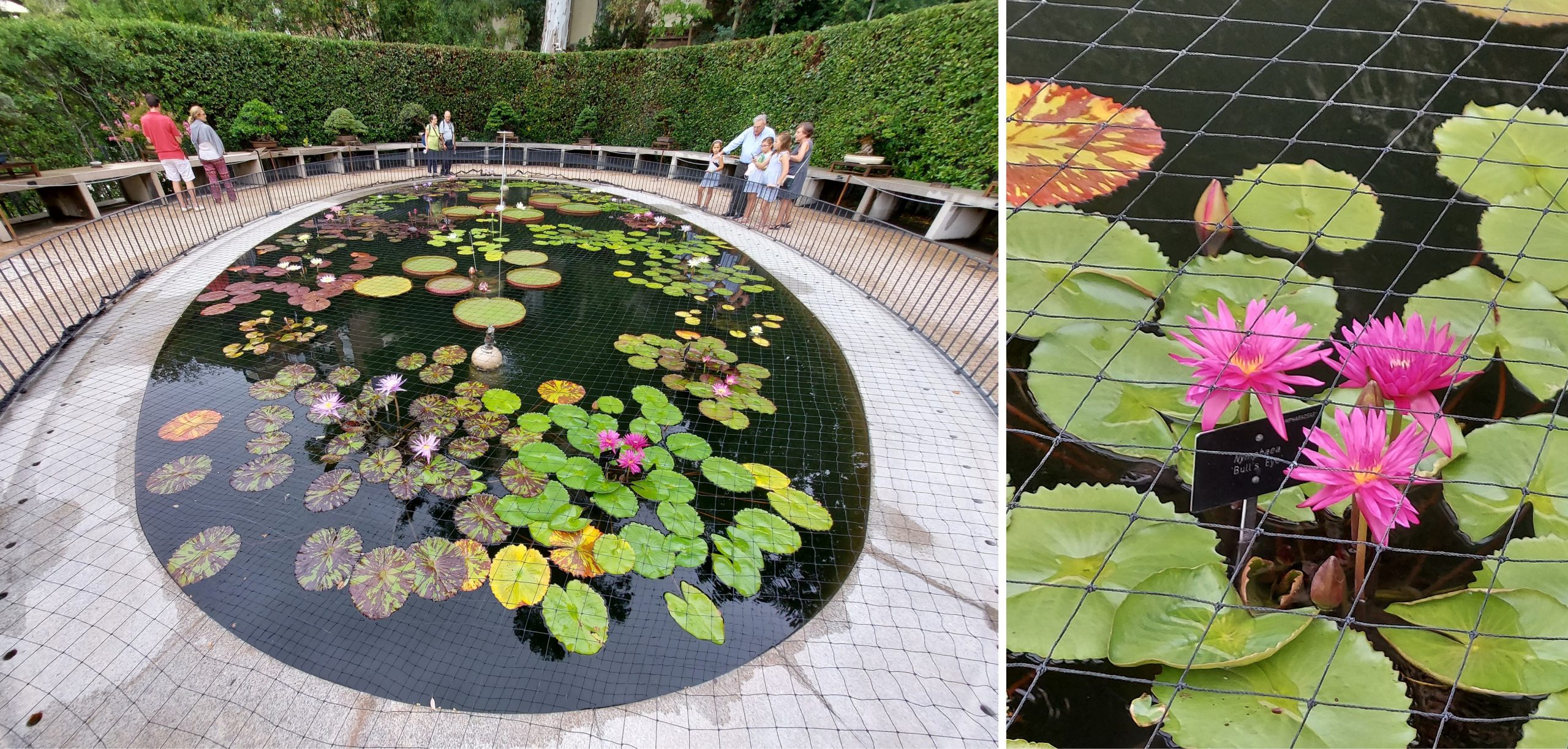
Among the scientific collections of the Royal Botanical Garden is its herbarium, which is the most important in Spain, bringing together nearly one million sheets, some dating back to the 18th century. The pliego refers to the folded paper used to preserve dried plants that have been pressed and labeled. Among its herbariums are the plants collected in scientific expeditions during the 18th and 19th centuries and include the American herbariums and the Philippine herbariums. And, since its foundation, the Botanical Garden has maintained an exchange of seeds with other institutions around the world.
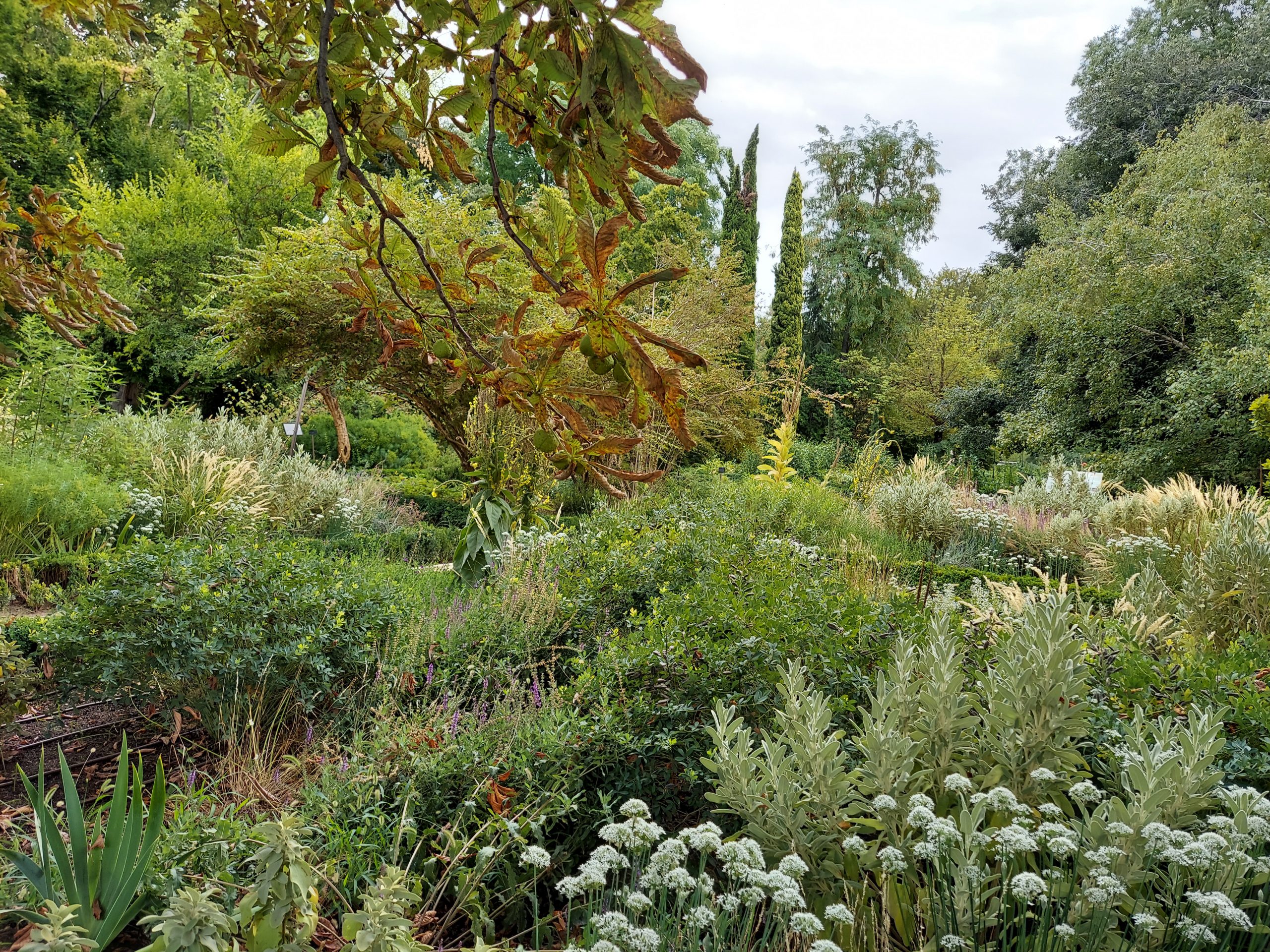
The library of the Royal Botanic Garden was formed at the same time as the garden grew. In 1781 it had about 151 works of which 83 were of Botany, 19 of Natural History and 49 of Chemistry; in 1787 it approached a thousand works; in 1801 there were already about 1,500; later other important writings were added.
As for the archive, since 1775, it keeps all the great documentation generated by the Garden itself, plus that which has been added, by deposit or donation, from the different botanical expeditions of the XVIII and XIX centuries. At present the library contains some 30,000 books on everything related to Botany, 2,075 titles of periodicals, some 26,000 pamphlets or separate issues, 3,000 titles on microfiche, 2,500 maps.
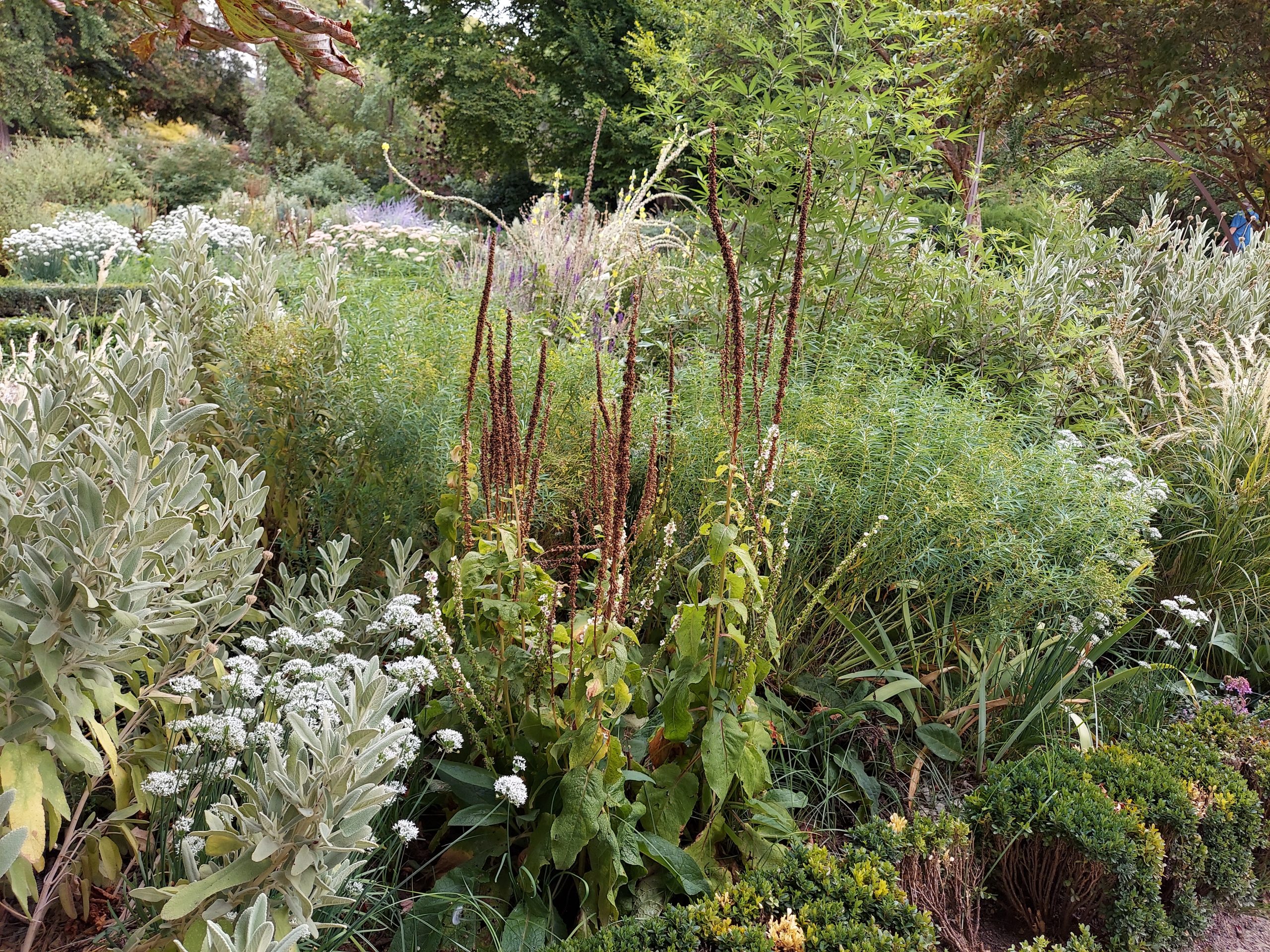
At any time of the year, visiting the Royal Botanical Garden is a delight. Observing the diversity of its flora, the colors and smells that each one of them offer us turn it into a living museum, where its works are transformed every day and every night.
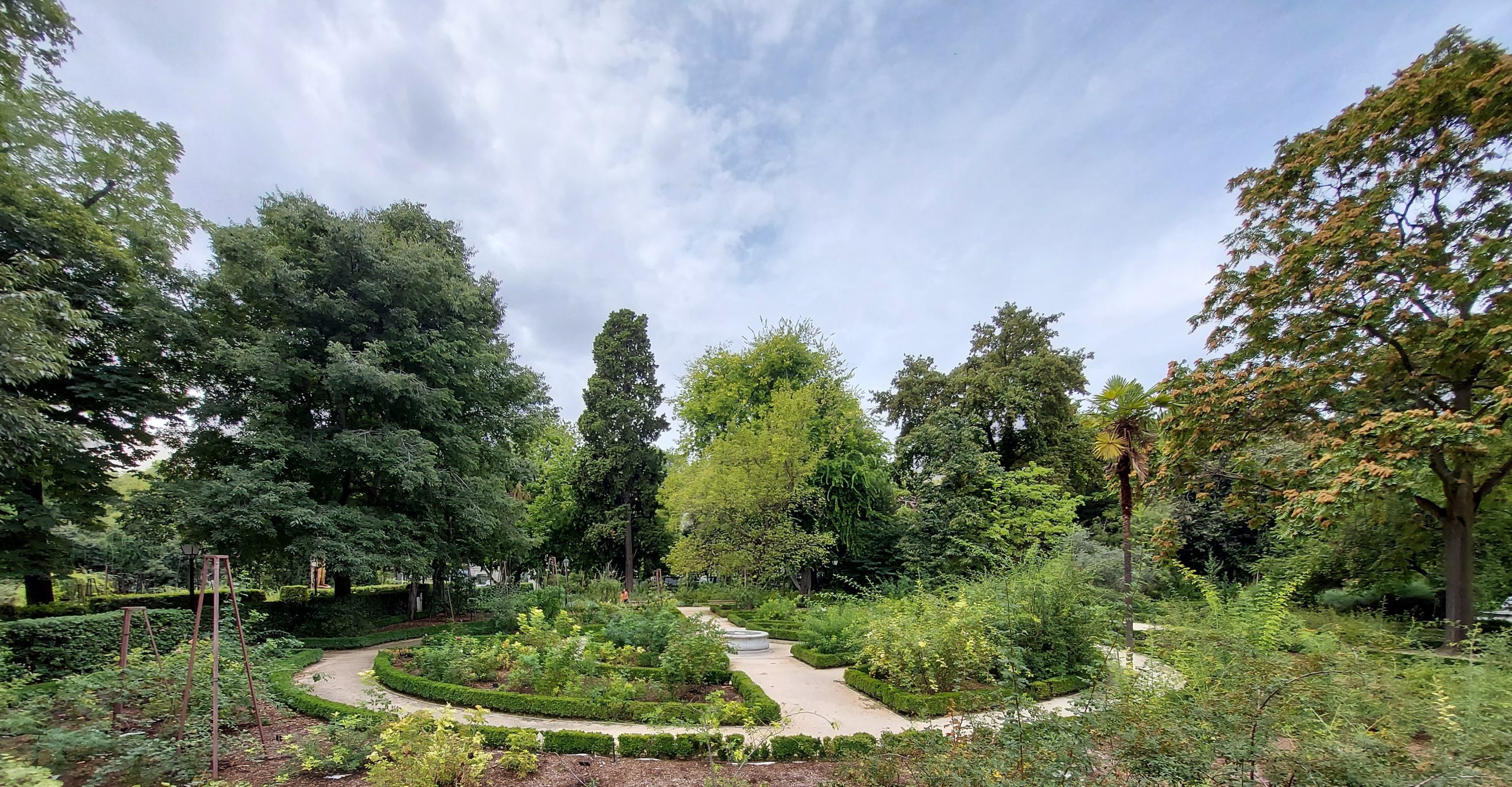
Resources:
- https://en.wikipedia.org/wiki/Real_Jard%C3%ADn_Bot%C3%A1nico_de_Madrid.
- https://www.disfrutamadrid.com/real-jardin-botanico
- https://www.esmadrid.com/informacion-turistica/real-jardin-botanico

